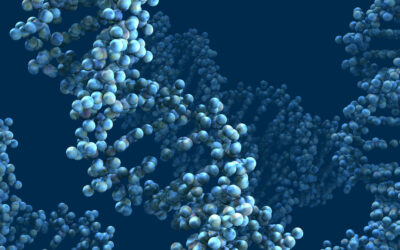APOA2 Gene and Personalized Nutrition: A Deep Dive
Introduction: Genetics and Personalized Nutrition
Consumer genetics is revolutionizing health by uncovering how our unique genetic code shapes dietary needs and health outcomes. The APOA2 gene is a prime example, influencing how the body processes dietary fats and manages weight. This genetic insight offers a personalized approach to nutrition, empowering individuals to align their diet with their biology.
What is the APOA2 Gene?
The APOA2 (Apolipoprotein A-II) gene encodes a protein critical to lipid metabolism, primarily within high-density lipoproteins (HDL). APOA2 plays a regulatory role in fat absorption, satiety signals, and the body’s overall handling of dietary lipids. This gene is predominantly expressed in the liver and small intestine, where it directly influences cholesterol transport and the body’s balance of lipid particles.
Variations in this gene affect how efficiently the body processes saturated fats, making it a cornerstone of personalized dietary strategies.
Expanded Physiology of APOA2
APOA2 is integral to lipid metabolism, affecting multiple physiological processes:
- Lipid Absorption: APOA2 influences the efficiency with which dietary fats are emulsified and absorbed in the gut. Its regulatory role ensures that lipid intake aligns with the body’s metabolic needs, preventing excess storage in individuals with optimal gene expression.
- Cholesterol Transport: By stabilizing HDL particles, APOA2 supports the reverse transport of cholesterol from peripheral tissues to the liver for excretion. This function helps maintain cardiovascular health and prevents lipid imbalances that contribute to metabolic disorders.
- Appetite Regulation: APOA2 modulates the release of satiety hormones like cholecystokinin (CCK). In individuals with the CC genotype, this regulation may be impaired, blunting the body’s natural mechanisms for signaling fullness and increasing the risk of overeating.
- Energy Balance: Beyond its role in lipid metabolism, APOA2 interacts with pathways regulating energy expenditure and fat storage. This dual role highlights its importance in overall weight management.
By understanding these mechanisms, we can appreciate how the APOA2 gene contributes to individual differences in dietary responses and metabolic health.
Genetic Variations: The -265T>C Polymorphism
The -265T>C polymorphism in the APOA2 gene is a key variant studied in the context of nutrition and health. This SNP results in three possible genotypes: TT, TC, and CC. Research reveals that individuals with the CC genotype are particularly sensitive to saturated fats, showing a higher likelihood of increased body mass index (BMI) and obesity when consuming a diet high in these fats.
In contrast, individuals with TT or TC genotypes appear less affected by saturated fat intake, suggesting a more adaptable metabolic response. These findings underscore the importance of genotype-specific dietary recommendations.
The Value of Genetic Testing for APOA2
Genetic testing for the APOA2 gene provides actionable insights for improving health through diet. Here’s why testing is valuable:
- Targeted Nutrition: Testing reveals your APOA2 genotype, helping identify whether you should limit saturated fats to maintain optimal weight and health.
- Proactive Weight Management: For individuals with the CC genotype, adjusting dietary fat intake early can mitigate genetic predispositions toward obesity, reducing the risk of long-term health complications such as metabolic syndrome and cardiovascular disease.
- Improved Dietary Adherence: Knowing your genetic predisposition enhances motivation to follow a diet tailored to your body’s unique needs, increasing the likelihood of long-term success.
- Comprehensive Health Insights: APOA2 testing often complements broader genetic assessments, providing a fuller picture of your health and dietary requirements.
By integrating APOA2 testing into consumer genetic programs, individuals can take control of their health with a scientifically informed approach to diet and lifestyle.
Practical Applications in Consumer Genetics
The benefits of understanding the APOA2 gene extend beyond weight management:
- Heart Health: Managing dietary fats based on APOA2 genotype can help maintain healthy cholesterol levels, reducing the risk of heart disease.
- Enhanced Wellness Programs: APOA2 insights are a valuable addition to personalized nutrition and fitness plans, aligning recommendations with genetic predispositions.
- Informed Consumer Choices: Genetic testing allows individuals to make smarter choices when selecting foods, enabling a diet that works with, not against, their biology.
Conclusion
The APOA2 gene exemplifies how genetic knowledge can transform nutrition and health. By understanding its role in lipid metabolism and appetite regulation, individuals can make dietary choices that align with their genetic makeup. Genetic testing for APOA2 represents a practical, science-backed approach to achieving long-term health and well-being. As consumer genetics continues to evolve, genes like APOA2 will play a pivotal role in empowering individuals to optimize their health.





